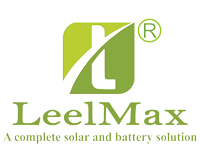In today’s world, where sustainability is more than a buzzword, solar panels are an excellent investment. Whether you’re looking to power your home or business, solar energy can reduce your carbon footprint and save you money in the long term. But with so many options available, how do you choose the right one? Let’s walk you through the important factors that will help you make an informed decision.
 The first step in choosing the right solar panel system is understanding your energy consumption. Start by reviewing your electricity bills to get an idea of your average monthly consumption, measured in kilowatt-hours (kWh). If you’re considering solar panels for a business, your energy needs may be significantly higher, so a larger system might be necessary. Homes generally have lower energy demands, making a smaller system more viable.
For an efficient system, it’s ideal to select panels that cover 80-100% of your energy needs. This ensures you maximize savings on energy bills and benefit from clean, renewable energy.
The first step in choosing the right solar panel system is understanding your energy consumption. Start by reviewing your electricity bills to get an idea of your average monthly consumption, measured in kilowatt-hours (kWh). If you’re considering solar panels for a business, your energy needs may be significantly higher, so a larger system might be necessary. Homes generally have lower energy demands, making a smaller system more viable.
For an efficient system, it’s ideal to select panels that cover 80-100% of your energy needs. This ensures you maximize savings on energy bills and benefit from clean, renewable energy.


1. Evaluate Your Energy Consumption
 The first step in choosing the right solar panel system is understanding your energy consumption. Start by reviewing your electricity bills to get an idea of your average monthly consumption, measured in kilowatt-hours (kWh). If you’re considering solar panels for a business, your energy needs may be significantly higher, so a larger system might be necessary. Homes generally have lower energy demands, making a smaller system more viable.
For an efficient system, it’s ideal to select panels that cover 80-100% of your energy needs. This ensures you maximize savings on energy bills and benefit from clean, renewable energy.
The first step in choosing the right solar panel system is understanding your energy consumption. Start by reviewing your electricity bills to get an idea of your average monthly consumption, measured in kilowatt-hours (kWh). If you’re considering solar panels for a business, your energy needs may be significantly higher, so a larger system might be necessary. Homes generally have lower energy demands, making a smaller system more viable.
For an efficient system, it’s ideal to select panels that cover 80-100% of your energy needs. This ensures you maximize savings on energy bills and benefit from clean, renewable energy.
2. Types of Solar Panels
There are three primary types of solar panels available on the market:
Monocrystalline Panels:
Known for their high efficiency (18-22%) and sleek appearance, monocrystalline panels are made from a single silicon crystal. They perform well in low-light conditions and have a longer lifespan, but they come at a higher price point. Polycrystalline Panels:
More affordable than monocrystalline, polycrystalline panels are made from multiple silicon fragments. Their efficiency is slightly lower (15-17%), but they are a good option if you’re working with a budget and have enough roof space. Thin-Film Panels:
Lightweight and flexible, thin-film panels are less efficient (10-12%) but can be ideal for large commercial buildings or unconventional installations. They are not the best option for residential use due to their lower efficiency.3. Panel Efficiency
Efficiency refers to how well a solar panel can convert sunlight into electricity. Monocrystalline panels offer the highest efficiency, making them ideal for spaces with limited roof area. Polycrystalline panels provide moderate efficiency, while thin-film panels, though less efficient, can still be suitable for large, open areas where installation space is not a constraint. The higher the efficiency, the more energy you can produce from a smaller surface area. If you want to cover most of your energy needs, go for the highest efficiency panel within your budget.
4. Location and Sunlight Exposure
Your geographic location significantly impacts the effectiveness of solar panels. If you’re located in an area with ample sunlight year-round, such as California or Arizona, you’ll benefit from higher energy production. However, even if you’re in a region with less sun exposure, modern solar panels are still capable of generating enough power to be beneficial, especially if you opt for higher-efficiency panels. For maximum efficiency, install your panels on a south-facing roof. This orientation captures the most sunlight in the Northern Hemisphere. Avoid areas of your roof that are frequently shaded by trees or nearby structures, as shading can reduce the amount of energy your panels generate.5. Durability and Warranty
Solar panels are a long-term investment, and durability should be a top priority. Most reputable panels come with a warranty of 25 years, covering manufacturing defects and ensuring performance over time. Over the years, panels will degrade slightly, but a high-quality panel should still produce about 80-85% of its original output after 25 years.
